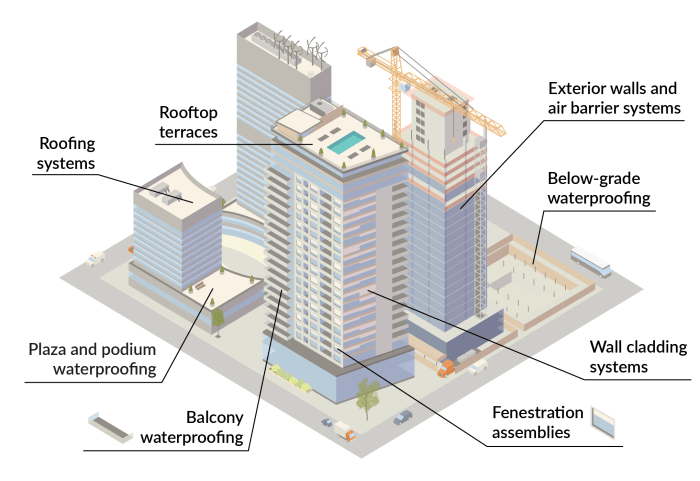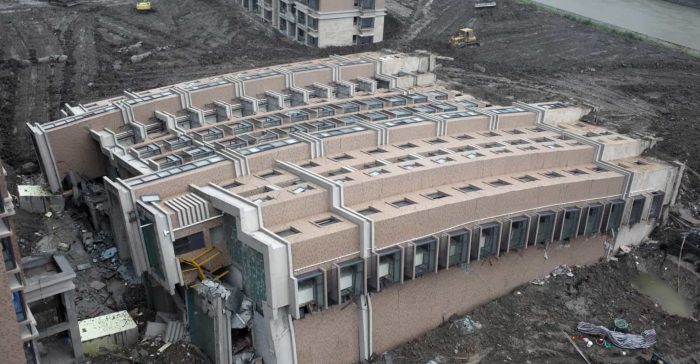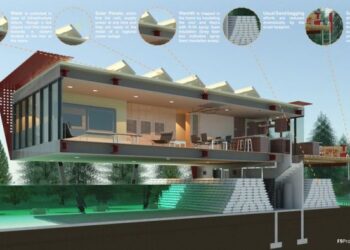Exploring the realm of Building Envelope Failures: Case Studies from Architecture, this introduction sets the stage with a captivating narrative that draws readers in and sparks curiosity right from the start.
The following paragraph will delve into the specifics of the topic, providing a clear and informative overview.
Understanding Building Envelope Failures
In architecture, the building envelope refers to the physical barrier that separates the interior environment of a building from the exterior surroundings. It includes the walls, roof, windows, and doors that protect the building's interior from weather elements and other external factors.
Common Causes of Building Envelope Failures
Building envelope failures can be caused by a variety of factors, including:
- Poor design or construction
- Improper installation of materials
- Lack of maintenance
- Extreme weather conditions
Examples of Different Types of Building Envelope Failures
Some common types of building envelope failures include:
- Water infiltration leading to mold and rot
- Air leakage causing energy inefficiency
- Structural issues due to moisture damage
Case Studies of Building Envelope Failures

Building envelope failures can have severe consequences on the structural integrity and safety of a building, as well as the well-being of its occupants. By analyzing specific case studies, we can gain valuable insights into the causes, impacts, and lessons learned from such failures.
Case Study: Water Leakage in High-Rise Condominium
In this case study, a high-rise condominium experienced water leakage issues due to a compromised building envelope. The failure was traced back to poor installation of the waterproofing membrane during construction, leading to water infiltration and subsequent damage to interior finishes.
The occupants were forced to evacuate while repairs were carried out, resulting in significant financial losses for the building owner.
Comparing and Contrasting Case Studies
- Case Study 1: Water Leakage in High-Rise Condominium
- Case Study 2: Air Infiltration in Office Building
- Case Study 3: Thermal Bridging in Residential Complex
By comparing and contrasting different case studies of building envelope failures, common patterns and root causes can be identified. For instance, inadequate maintenance practices, design flaws, and poor construction techniques often contribute to these failures. Understanding these patterns can help architects and engineers prevent similar issues in future projects.
Impact of Building Envelope Failures
Building envelope failures not only compromise the structural integrity of a building but also pose health and safety risks to occupants. Water infiltration can lead to mold growth, indoor air quality issues, and damage to personal belongings. In extreme cases, structural failures resulting from envelope failures can jeopardize the safety of everyone within the building.
It is crucial for professionals in the construction industry to address and rectify envelope failures promptly to ensure the longevity and safety of buildings.
Prevention and Mitigation Strategies
Building envelope failures can lead to significant issues in terms of structural integrity, energy efficiency, and overall building performance. Architects play a crucial role in preventing such failures and implementing effective mitigation strategies when necessary. By focusing on materials selection, design considerations, and proactive maintenance, architects can enhance the durability and longevity of building envelopes.
Role of Materials Selection
Materials selection is a key factor in ensuring a robust building envelope. Architects need to carefully choose materials that are durable, weather-resistant, and compatible with the overall design. For example, using high-quality insulation materials, weather barriers, and sealants can help prevent moisture intrusion and thermal bridging.
Additionally, selecting materials with proven track records and appropriate testing certifications can provide added assurance of performance
.Preventive Design Considerations
Incorporating preventive design considerations can help architects avoid common building envelope failures. This includes proper detailing of transitions, joints, and penetrations to minimize potential leakage points. Implementing effective moisture management strategies, such as proper drainage systems and vapor barriers, can also contribute to the overall resilience of the building envelope.
By addressing potential weak points during the design phase, architects can proactively prevent failures down the line.
Proactive Maintenance and Inspection
Regular maintenance and inspection are essential components of preventing building envelope failures. Architects should advocate for routine inspections to identify early signs of deterioration, such as cracks, leaks, or corrosion. By addressing issues promptly and implementing timely repairs or retrofits, architects can mitigate potential failures before they escalate.
Collaborating with building owners and facility managers to establish maintenance protocols can help ensure the long-term performance of the building envelope.
Successful Mitigation Efforts
In cases where building envelope failures are identified, architects can implement successful mitigation efforts to address the issues. This may involve conducting thorough investigations to pinpoint the root causes of failures and developing targeted solutions. For example, retrofitting failed components, improving drainage systems, or enhancing ventilation can help rectify existing issues and prevent future failures.
By leveraging lessons learned from past failures, architects can enhance their approach to mitigation and ensure the resilience of building envelopes in the future.
Regulatory and Compliance Aspects

Building codes and regulations play a crucial role in ensuring the safety and integrity of building envelopes. Compliance with these standards is essential to prevent failures and maintain the overall performance of the structure.
Building Envelope Requirements in Building Codes
Building codes Artikel specific requirements for building envelopes to ensure they meet certain standards for safety, durability, and energy efficiency. These requirements often include specifications for materials, insulation, moisture management, and ventilation.
Consequences of Non-Compliance
Failure to comply with building envelope standards can have serious consequences. It can lead to structural issues, moisture infiltration, energy loss, and even safety hazards for occupants. Non-compliance may result in fines, legal liabilities, and the need for costly repairs or renovations.
Importance of Regular Inspections and Maintenance
Regular inspections and maintenance are crucial for ensuring ongoing compliance with building envelope standards. By identifying and addressing issues promptly, property owners can prevent failures, extend the lifespan of the building envelope, and maintain a safe and efficient structure.
Conclusion
In conclusion, this discussion on Building Envelope Failures: Case Studies from Architecture wraps up with a compelling summary that encapsulates the key points and leaves readers with valuable insights.
Commonly Asked Questions
What are some common causes of building envelope failures?
Common causes include poor installation, lack of proper maintenance, and design flaws.
How can architects prevent building envelope failures?
Architects can prevent failures by using quality materials, conducting regular inspections, and ensuring proper installation.
What is the impact of building envelope failures on occupants?
Building envelope failures can lead to discomfort, health issues, and safety hazards for occupants.









